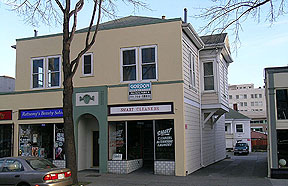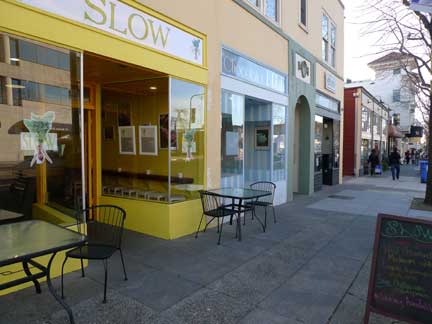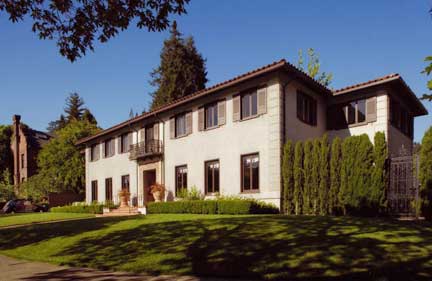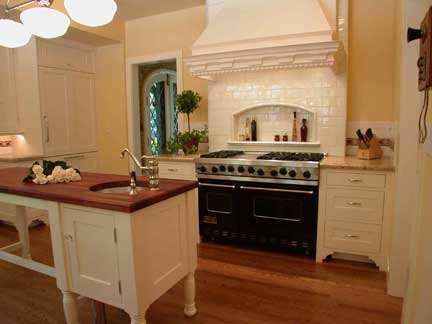BAHA Preservation Awards 2011
Part Three
Awards
Bertin Properties, before (photo: Daniella Thompson, 2004)
Bertin Properties
1952–66 University Avenue
(1889–1922 & 1923)
Bertin Properties, after (photo: Carrie Olson, 2011)
Alexandre and Marie Bertin, French immigrants who owned one of the West Coast’s largest dry cleaning and dyeing establishments in San Francisco, began acquiring properties on University Avenue in the late 1880s. By 1891, they had established a flower nursery on their Berkeley land, and eventually they came to own most of the lots on the south side of University Avenue between Milvia and Grove streets. As their businesses evolved over time, they collected various buildings on these two parcels, including two 19th-century workmen’s cottages, and twin Colonial Revival cottages—the latter four in the rear courtyard. The complex was designated a City of Berkeley Structure of Merit in 2003.
Restoring such a disparate collection presented an immense challenge. But no commercial building in Berkeley, however dilapidated, has been too much of a challenge for John Gordon and his wife, Janis Mitchell. As they have done with so many other local historic structures, the Gordons breathed new life into old decrepit buildings. Rechristened University Rose Garden, the complex now resembles a miniature version of Oakland’s Preservation Park, offering a mix of retail, office, and community space, and landscaped with John’s father’s prize-winning roses.
Photo: Carrie Olson, 2011A handsome iron gateway found at Urban Ore ushers the way into the courtyard, which is furnished with picnic tables and umbrellas, providing a restful atmosphere right in the middle of downtown Berkeley. The courtyard is freely open to the public. And there’s more: the row of six small stores has become celebrated as Berkeley’s Gourmet Gulch, housing an artisan chocolatier, two innovative restaurants, a German bakery, a coffee shop, and a long-standing music store.
_____________________________
Selden Williams House
2821 Claremont Boulevard
(Julia Morgan, 1927–28)Occasionally, even in our very imperfect world, the word “perfection” feels appropriate. The home that Julia Morgan designed for Selden and Elizabeth Williams has always been considered one of the jewels of domestic architecture in Berkeley. But the years can take their toll. It has never been the victim of gross neglect. Its soberly elegant Tuscan fa�ade has always looked out on Claremont Boulevard with great dignity. But it needed love—more love than Mrs. Williams, a reclusive widow, or an institution, the University of California, had been able to give it.
And then something wonderful happened. When the house was almost 80 years old, it was bought by a couple who appreciated its beauty and were courageous enough to address the challenge of shepherding it intelligently and gently into the 21st century, renewing what needed to be renewed without disturbing the integrity of the 1920s design.
Photo: Carrie Olson, 2011All the things that don’t show have been updated or restored, from the wiring and heating systems to the water-damaged masonry of walls and Gothic tracery. On the other side of the coin, visible surfaces—wood and marble floors; ceilings; woodwork; light fixtures; ornaments like the della Robbia tondo—have been restored or appropriately replaced. A dark catering kitchen became an inviting, light-filled workplace in keeping with the style of the house.
While the owners have been conscientious curators, maintaining virtual museum standards in everything they undertook, it must be emphasized that the result of this enormous undertaking has not been to turn this house into a museum in the static, formal sense of the word. On the contrary, the house has come to life, opening its doors to a constant stream of guests, realizing the gracious potential for which it was originally designed by Julia Morgan.
Photo: Carrie Olson, 2011
Awards 2011
Copyright © 2011 BAHA. All rights reserved.






